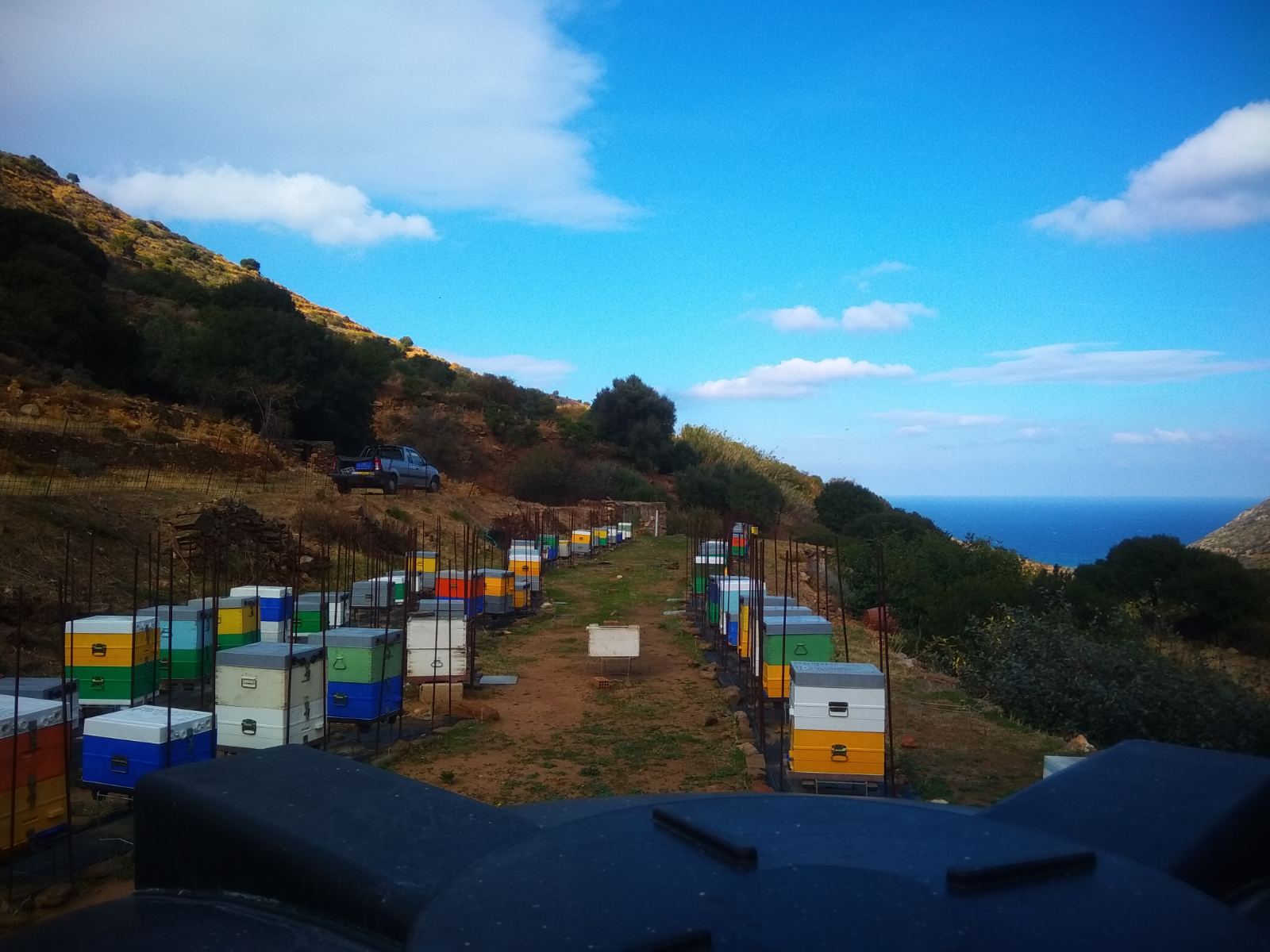Facilities
The beekeeping facility includes areas and buildings where the various beekeeping processes take place. The production and collection of the various beekeeping products take place in the field areas, also known as the "beehive". In the building facilities, the processes of extraction, preservation and packaging of honey and other beehive products are carried out.
The apiary consists of the hive development area, the equipment storage area and all the specially designed surrounding area. The estate before its formation in its current form was an abandoned pasture, however with a lot of effort, respect for the environment, patience and perseverance it was transformed into a rich beekeeping facility. A fence, a water supply system, an area for growing aromatic herbs, fruit trees and beekeeping trees were created, while with the addition of bees it is buzzing with life. With our constant engagement and progress, but above all with the love for what we do, both the apiary and the estate evolve, improve and beautify.
This facility is located in the property area of Koronida, in the location of Ouroi, south of the village of Apollo.
The permanent building facilities are located in Chora of Naxos, in the area of Agios Polykarpos. They consist of the processing area, an outdoor hive storage and maintenance area and an auxiliary warehouse where clothing, food and other equipment are kept. Centrifugation, filtration, maturation, packaging and preservation of the honey are carried out in the appropriately designed processing area or preparation room, observing all the prescribed rules of hygiene and food safety.
Apollo
Apollo is a picturesque fishing village as well as a tourist resort in the homonymous bay of northeastern Naxos and is the port of Komiaki. At the mouth of this cove are ancient quarries, while the most important attraction of the area, an ancient colossal statue of a kouros in a supine position, is located on the western hill, next to the village.
Between the northern and eastern slopes of the Anathematistra mountain (altitude 779m) and the western slopes of the Kalogeros hill (altitude 357m), the village near the sea is developing with the individual scattered settlements reaching south to the intersection on the APOLLONA-KOMIAKIS public road to MESI. In this narrow basin along the river that originates from the highlands of Komiaki and the Troullos mountain (altitude 598m), the most fertile area of Apollo is created, which widens as it approaches the coast.
Apollon used to be a port of call for the ships that ran the "barren line" of the Cyclades. Until about 1960, when the opening of a carriage road by a military unit began, this village was connected to the surrounding villages by a semi-road.
Today Apollo of Naxos has developed into a tourist resort with many beach taverns and cafes. It has a small pier that mainly serves fishing boats and small yachts. The bay of the same name is wide enough for water sports and provides safety mainly in south and southwest winds.
Nature of Apollo
The nature of Apollon, in addition to its developed coastline, has been endowed with a variety of vegetation and sufficient water both from natural springs and from the course of the river as well as the many descending streams from the falls mainly of Anathematistra. It has fertile soil with the potential for multiple agricultural crops throughout the year, as well as the development of arboriculture with all kinds of citrus trees, olives, pears, pomegranates, peaches, apricots, etc., while eucalyptus, oak, holly, sycamore and poplar grow naturally.
On the slopes of Galati, Kalogeros and the surrounding heights where nature rages, our beehives collect the necessary nectar, pollen and propolis to produce the precious APOLLON HONEY and the other hive products. On these slopes thrive the abundance of beekeeping plants, shrubs and herbs found in the flora of the CYCLADES, the main of which are thyme, thrumbi, oregano, rosemary, lavender, sage, heather, ladania, ligaria, the ivy, the wild clover, the knotweed, the reed etc.



